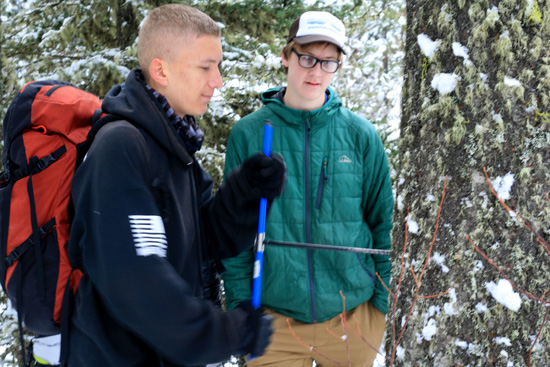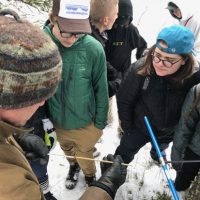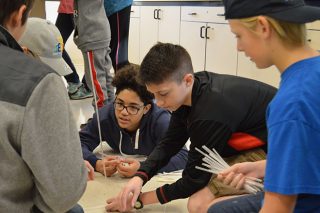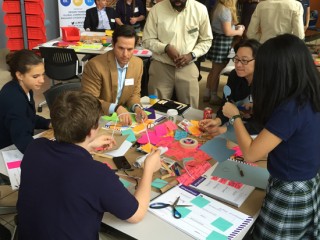Last fall, students in Bozeman Field School’s life science class used conceptual work, local field visits, and conversations with experts to gather stories and gain a deeper understanding of the question, “What impacts community?”
Science teachers Dalton McCurdy and Tory Dille designed the curriculum to allow their students to hone critical thinking skills while engaging with both the natural world and their local community. The curriculum also provides a framework for students to make connections between environmental issues, land management agencies, and ecological communities in the nearby Greater Yellowstone Ecosystem.
To enhance their understanding of forest health, biodiversity, and succession, the class met with forest and fire ecologist specialists from the U.S. Forest Service to learn about a local Forest Revision Plan for the Custer Gallatin Forest. An area wildlife biologist explained his winter wildlife and habitat studies in an area designated for a potential logging project that would affect a critical habitat for lynx and moose.
Students ultimately staged a mock town meeting to role-play a range of “stakeholder” perspectives in a formal conversation about the project’s impact on members of the Bozeman community. “I learned the value of appreciating multiple perspectives on an issue,” says junior Kayla Wales. “I was reminded that people with opposing views can be just as passionate as I am, and that the full range of views deserves to be heard.”
Participants came away with with a better understanding of their community, what scientists do, and the relevance of field science research—part of the school’s objective to guide students toward becoming curious, insightful, and engaged human beings.






